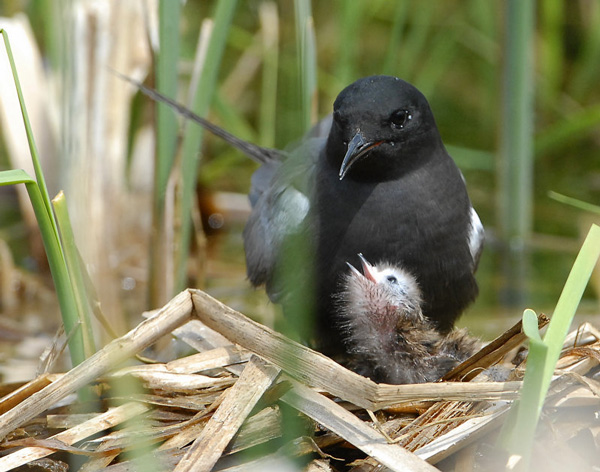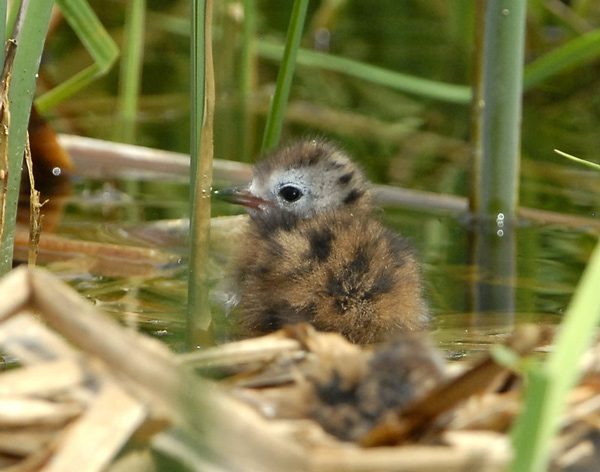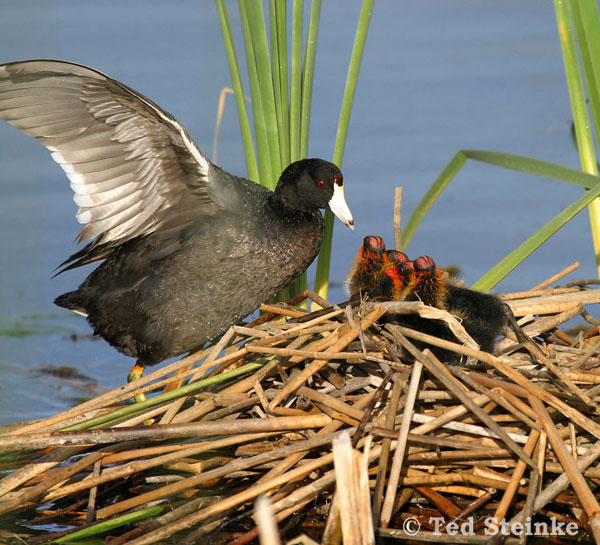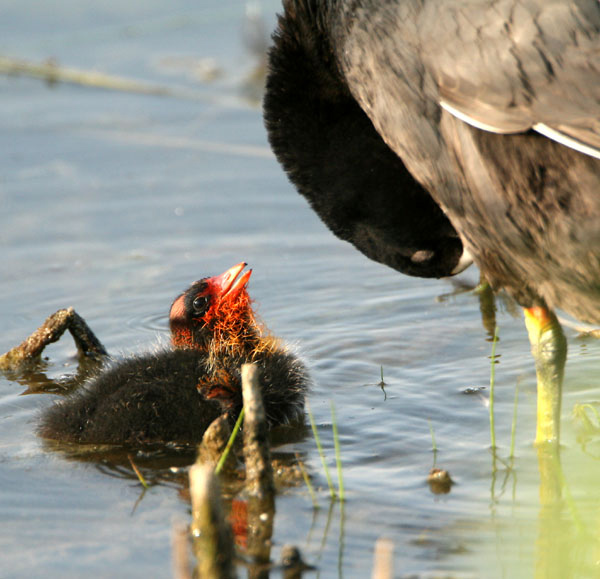|
|
|
Introduction |
Secluded Place |
Scrape | Mound | Burrow | Cavity | Plate |
Platform |
Pendant | Sphere |
Cup | Host | |
Plate or Small
Platform Nests
Unlike
the deep, well-formed cup nests, the plate nests are shallow and
loosely contracted and are built to accommodate fewer eggs for a
shorter period of time before they leave the nest.
|
|
 Black
Terns often nest on bent-over dead canes in marshy areas or on
floating dead plant material. Their shallow, loosely built
nests keeps the usual three eggs just above the water. Black
Terns often nest on bent-over dead canes in marshy areas or on
floating dead plant material. Their shallow, loosely built
nests keeps the usual three eggs just above the water. |
New Chick, by Paul Higgins
ęPaul Higgins
|
|
 The
eggs are incubated for 21 or 22 days. A few days after hatching
the young can leave the nest with strict supervision of the
parents. The young birds can fly about 21 to 28 days after
hatching. The
eggs are incubated for 21 or 22 days. A few days after hatching
the young can leave the nest with strict supervision of the
parents. The young birds can fly about 21 to 28 days after
hatching. |
Young Black Tern, by Paul Higgins
ęPaul Higgins
|
|
 American
Coot nests are made from the stems of marsh plants and float
on the water attached to reeds or other plants. They can be
hidden in bulrushes or cattails out in the shallow water of close
to the shore. American
Coot nests are made from the stems of marsh plants and float
on the water attached to reeds or other plants. They can be
hidden in bulrushes or cattails out in the shallow water of close
to the shore. |
American Coot Nest, by Ted Steinke
ęTed Steinke
|
|
 The
usual 8 to 12 eggs are incubated by both parents for 23 or 24
days. Soon after hatching and drying out, the chicks swim,
following the parents, to be fed. The young coots can fly
about 49 to 56 days after hatching. The
usual 8 to 12 eggs are incubated by both parents for 23 or 24
days. Soon after hatching and drying out, the chicks swim,
following the parents, to be fed. The young coots can fly
about 49 to 56 days after hatching. |
Young Coot with Mother, by Kent Keller
ęKent Keller
|
|
|